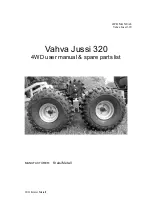
6
7. Make sure not to pour in more than 5 ml. of water! It is better to start with slightly less water, and add it
a drop at a time, as this solution tends to absorb water quickly and become too wet.
8. Return the two plastic spacer grids to their jars so the feet sit down in the salt slurry.
9. Fill the empty third jar with room temperature water.
10. For K4 units, remove the lanyard.
11. For Kestrel 3000-3500 units, remove the lanyard keeper and slide the protective case off the lanyard.
Fold the lanyard a couple times to shorten it and affix with a small rubber band so that the full lanyard
length is shorter than the Kestrel 3000-3500 body and that the lanyard cannot come in contact with the
salt solution.
12. Only calibrate one Kestrel unit in the jar at a time. Attempting to calibrate more than one unit at a time
will reduce RH calibration accuracy.
Note: The plastic spacers should not be used for the calibration of the Kestrel 4400/4600 as they will not fit.
When placing the Kestrel 4400/4600 in the jar, inserting it upside down is recommended. The black globe is
more easily cleaned when transferred from one salt jar to the next than the bottom of the Kestrel.
Note: The salt solutions will tend to change over time. The NaCL solution will tend to dry out, and the MgCl
solution will tend to pull humidity from the air and get too wet. For this reason, keep the lids securely closed
on the calibration chambers except when opening them to load a unit for calibration. You may add drops
of water to the NaCl solution to return it to the proper “slurry” consistency if required. You may also place
the MgCl solution in a clean pan in a slow oven to dry it if it becomes too wet, or you may simply purchase
replacement salt jar and remix the solutions from scratch.






























